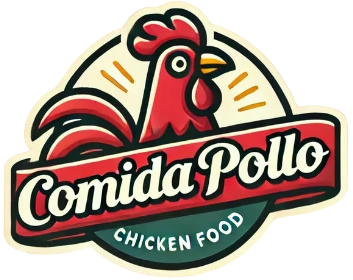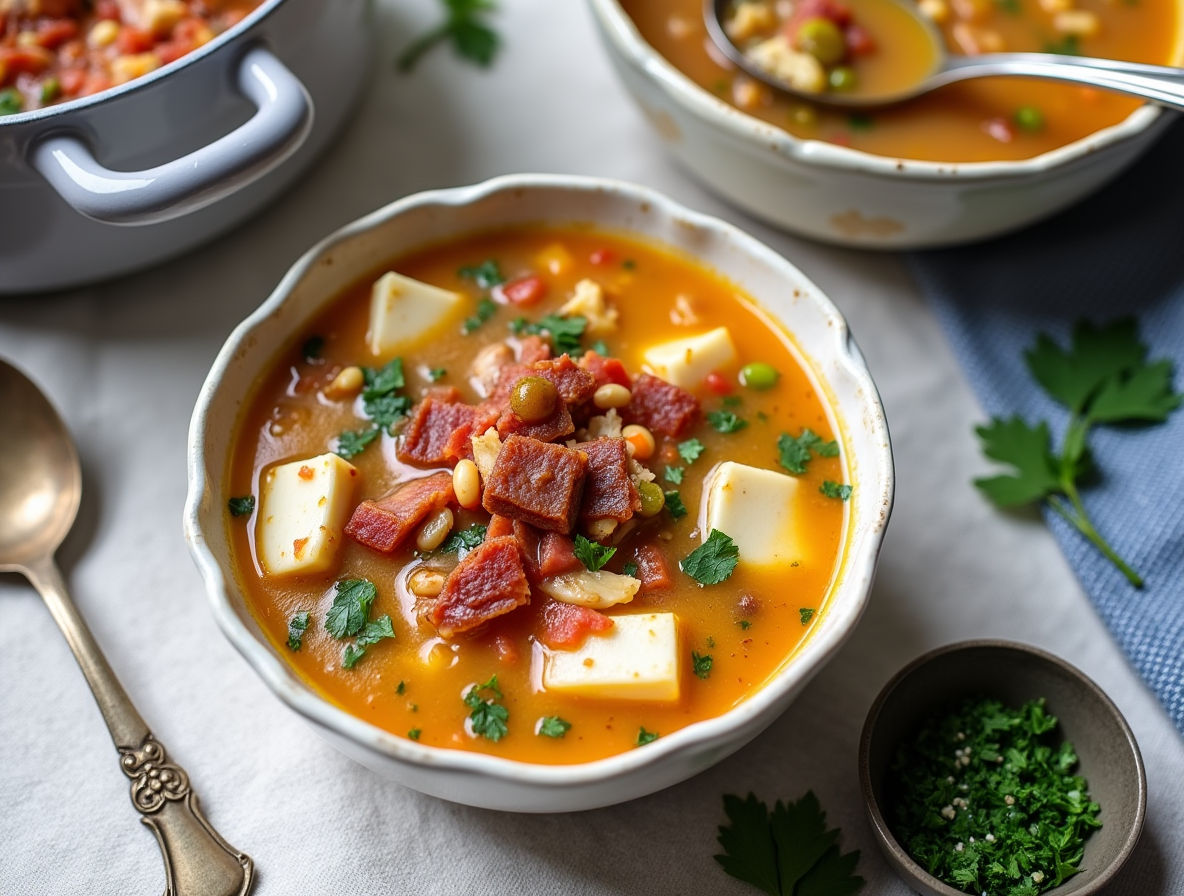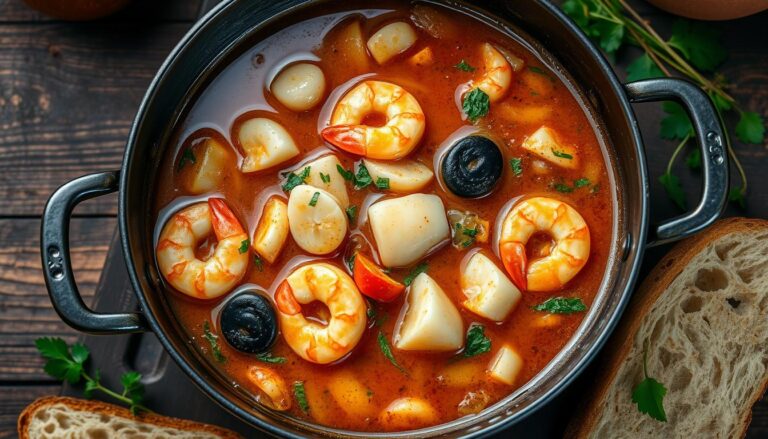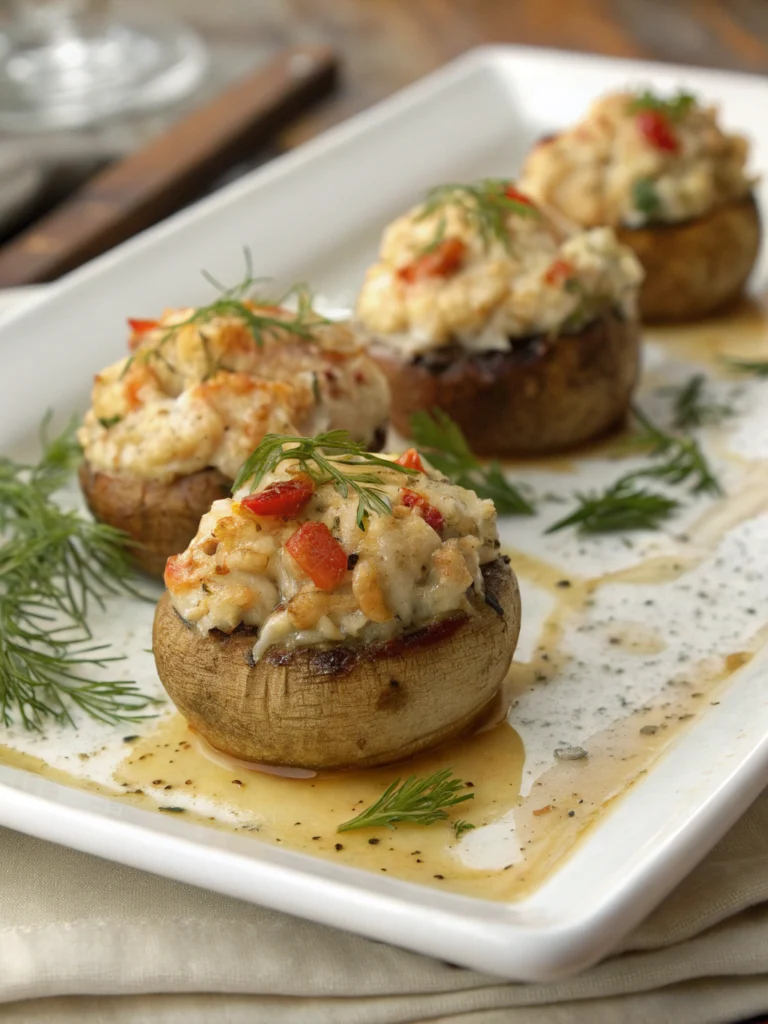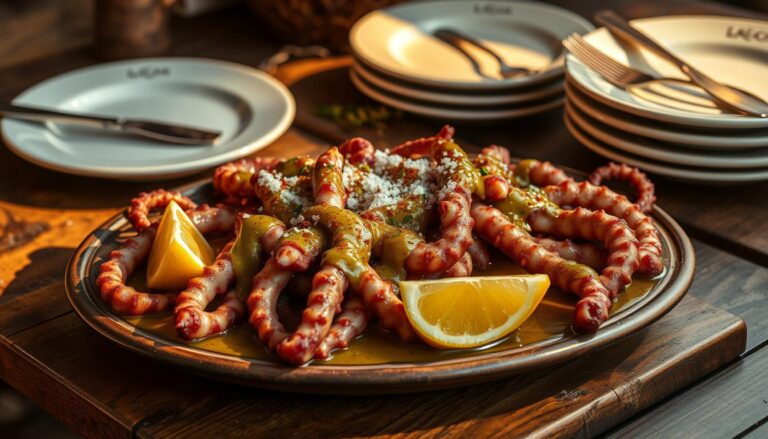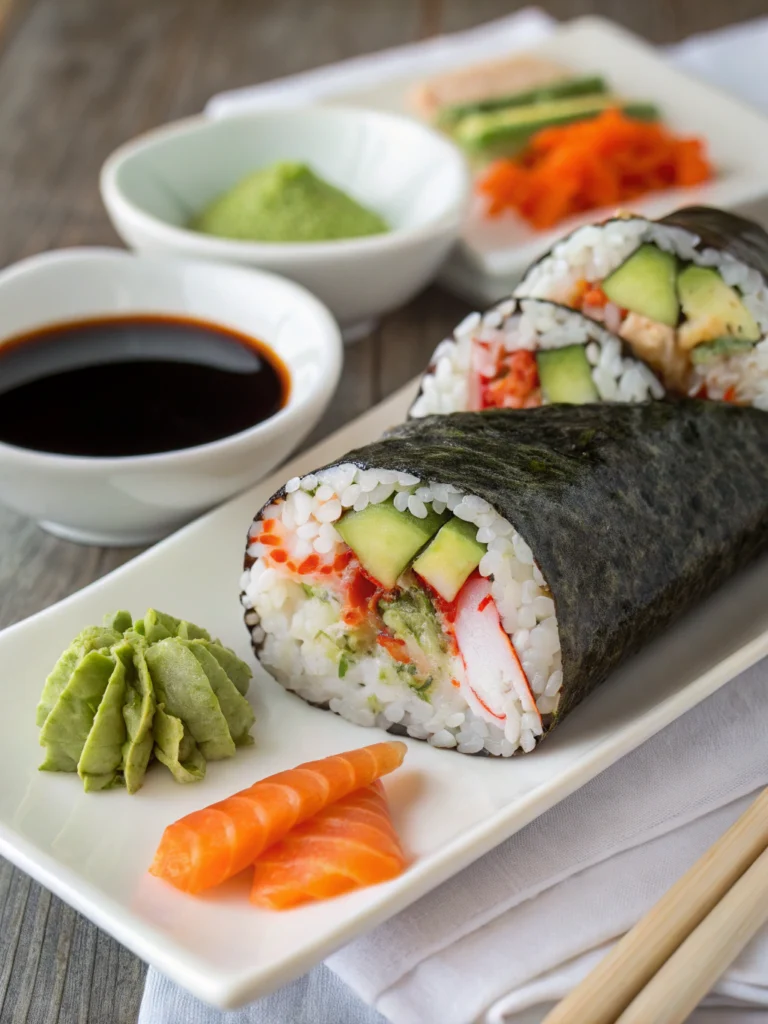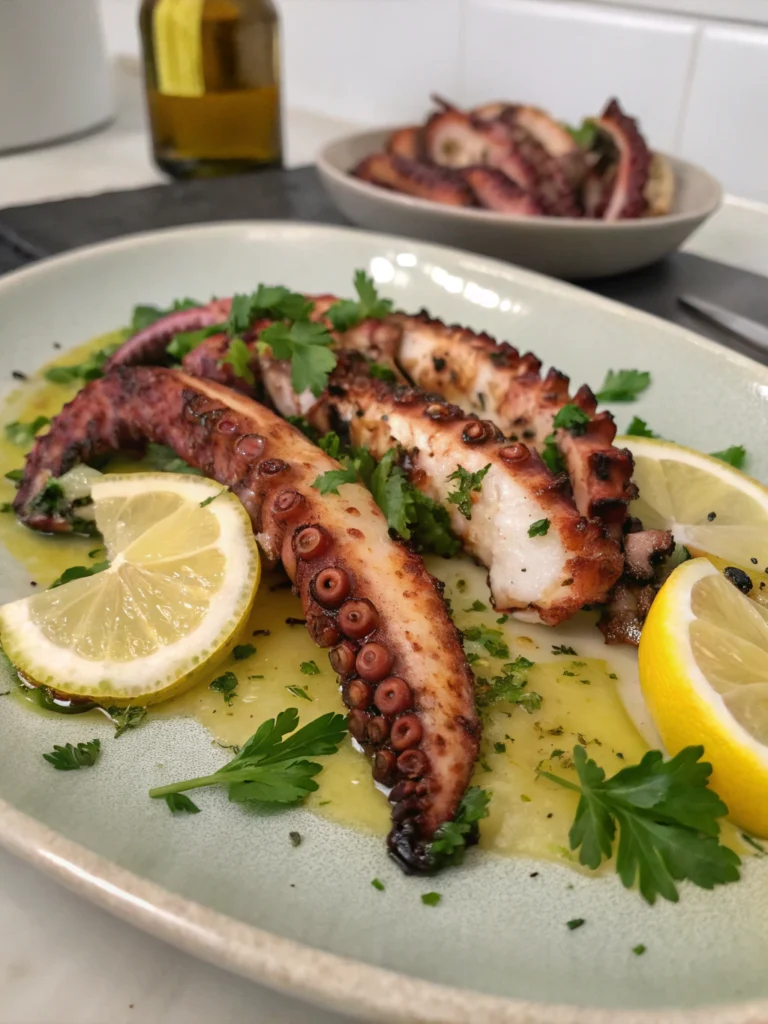Manhattan Clam Chowder Recipe: A Taste of the Big Apple
Imagine yourself walking down the bustling streets of Manhattan, the crisp air filled with the tantalizing scent of savory aromas drifting from nearby seafood restaurants. The iconic Manhattan clam chowder, with its rich, tomato-based broth, packed with tender clams, hearty vegetables, and a touch of spice, is a comforting reminder of New York’s culinary history. Unlike its creamy cousin from New England, this chowder embraces the vibrant flavors of tomatoes, making it a lighter but just as satisfying dish. Whether served in a cozy diner or prepared in your own kitchen, Manhattan clam chowder brings the essence of coastal living and urban hustle together in every spoonful.
This beloved dish, though often associated with the streets of New York, has deep ties to communities along the East Coast, with roots tracing back to early fishing traditions. It’s not just a meal; it’s a reminder of simpler times when fresh seafood and local ingredients were at the heart of every kitchen. In this recipe guide, we’ll dive into how to make a batch of this hearty chowder from scratch, explore its cultural significance, and share tips for customizing it to suit your tastes.
Table of Contents
Key Takeaways:
- Origins & Cultural Importance: Manhattan clam chowder originated from New York’s coastal culture, highlighting the region’s access to fresh seafood. It’s a staple in many Northeastern households, especially in coastal communities.
- Essential Ingredients: Fresh clams, tomatoes, carrots, celery, and onions form the base of this vibrant chowder, creating a balanced flavor profile.
- Cooking Method & Tips: Manhattan clam chowder is typically simmered to bring out the flavors, with some variations adding a smoky element through bacon or ham.
- Serving Suggestions: Best served in bowls with crusty bread or crackers. Some even enjoy a dash of hot sauce or fresh herbs as a garnish.
- Variations & Customizations: Adjust the vegetables, add more heat with chili flakes, or experiment with seafood like mussels and shrimp to make it your own.
- Nutritional Benefits: This chowder is relatively light and full of protein from the clams, with the vegetables providing a healthy dose of fiber and vitamins.
- Popular Pairings: Serve with a fresh garden salad, a warm loaf of sourdough, or a crisp white wine like Sauvignon Blanc for the perfect meal.
Cultural Heritage:
Manhattan clam chowder holds a special place in the hearts of those who cherish New York City’s food culture. Though often overshadowed by its creamier counterpart from New England, this version stands out for its fresh, tomato-based broth, a nod to the immigrant influence that brought tomatoes and other vegetables into American kitchens. The dish’s origins can be traced back to the early 19th century, when local fishermen would combine their fresh catches with vegetables and herbs, creating a dish that was both practical and nourishing.
Over time, the recipe has evolved, and today, Manhattan clam chowder is a beloved fixture on menus from Maine to Florida. It’s often served during the colder months but can easily be enjoyed year-round. The chowder has become a symbol of East Coast comfort food, making its way into holidays, family gatherings, and casual dinners alike.
Essential Ingredients:
Here’s what you’ll need to make your own Manhattan clam chowder:
- Clams: Fresh or canned, clams are the star of the dish, providing a briny, seafood-rich flavor that defines the chowder.
- Tomatoes: A key ingredient in Manhattan clam chowder, tomatoes give the broth its vibrant red color and slightly tangy flavor.
- Carrots, Celery, & Onion: The holy trinity of vegetables adds depth to the flavor, with each offering a subtle sweetness and savory essence.
- Potatoes: These help thicken the soup and give it a satisfying, comforting texture.
- Herbs & Spices: Bay leaves, thyme, and a pinch of red pepper flakes bring out the richness in the broth. Fresh parsley or chives add a pop of color and brightness when garnishing.
- Broth or Stock: For the base, you can use vegetable stock, clam juice, or even chicken stock, depending on the flavor depth you prefer.
Preparation and Marination Techniques:
To prepare your Manhattan clam chowder:
- Prep the Vegetables: Chop the onions, carrots, and celery into small, even pieces. Dice the potatoes into bite-sized chunks.
- Prepare the Clams: If using fresh clams, scrub them clean and steam them open before removing the meat. Save the clam juice for the soup base. If using canned clams, drain and rinse them.
- Tomato Base: Start by simmering diced tomatoes, garlic, and a pinch of sugar to balance acidity. This step enhances the depth of the tomato flavor.
The Secret to Authentic Seasoning:
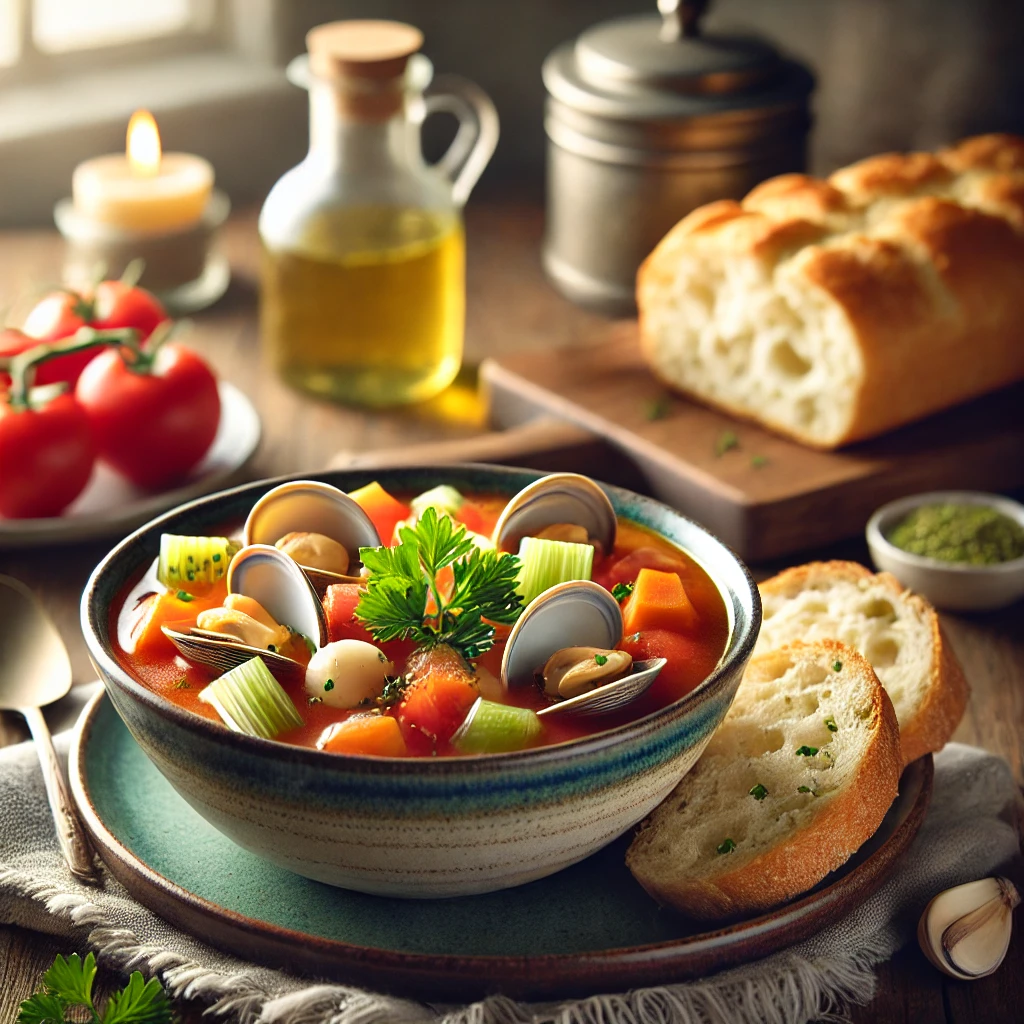
The key to a well-seasoned Manhattan clam chowder is balancing the flavors of the tomato with the brininess of the clams. To achieve this, use bay leaves, thyme, and a pinch of red pepper flakes. The bay leaves impart an earthy flavor, while the thyme adds warmth. Adjust the red pepper flakes based on your spice tolerance.
A splash of hot sauce or Worcestershire sauce can also elevate the broth, while fresh parsley or dill can bring a fresh contrast to the rich soup.
Step-by-Step Cooking Method:
- Sauté the Vegetables: Heat olive oil in a large pot over medium heat. Add the onions, carrots, and celery, and cook until they soften, about 5 minutes.
- Simmer the Broth: Add in the tomatoes, potatoes, clam juice, and stock. Stir in bay leaves, thyme, and red pepper flakes. Let it simmer for 15-20 minutes until the potatoes are tender.
- Add Clams: Stir in the clams and cook for another 5 minutes until heated through. Adjust seasoning with salt, pepper, and hot sauce if needed.
- Serve & Garnish: Ladle the chowder into bowls and top with fresh parsley or chives for a burst of color.
Common Mistakes to Avoid:
- Overcooking the Clams: Clams cook quickly, so be careful not to overcook them, or they may become rubbery.
- Skipping the Clam Juice: The clam juice adds richness to the broth, so don’t skip it! If you’re using canned clams, be sure to save the juice.
- Undercooking the Vegetables: Make sure the carrots and potatoes are tender before adding the clams, as they take longer to cook.
Traditional Side Dishes & Accompaniments:
To round out your meal, pair your Manhattan clam chowder with:
- Crusty Bread or Crackers: A must-have for dipping into the savory broth.
- Garden Salad: A crisp, refreshing salad balances the richness of the soup.
- White Wine: A light Sauvignon Blanc or Pinot Grigio complements the flavors of the chowder.
Storage and Reheating Guidelines:
Leftovers can be stored in an airtight container in the fridge for up to 3 days. When reheating, do so gently on the stove to avoid overcooking the clams. You can also freeze the chowder for up to 3 months, but the texture of the clams may change slightly upon reheating.
Conclusion:
Manhattan clam chowder is more than just a dish—it’s a slice of coastal history in a bowl. Whether you’re making it for a family dinner, a cozy weekend meal, or a special holiday gathering, this chowder will fill your home with warmth and the irresistible scent of fresh seafood. Don’t be afraid to experiment with the recipe, adding your personal touch or favorite variations. And, of course, I’d love to hear how you make this dish your own—share your experiences and adaptations in the comments!
FAQ Section:
- Can ingredients be substituted for dietary preferences? Yes! For a gluten-free version, simply use a gluten-free flour or cornstarch as a thickener. For a dairy-free option, use coconut milk or oat milk instead of cream.
- How can the recipe be made vegan or gluten-free? To make it vegan, omit the clams and substitute vegetable broth for the clam juice and stock. You can use a plant-based seafood alternative or even tofu for added texture.
- What are the best ways to adjust the recipe for different serving sizes? This recipe can be easily scaled up or down. Simply adjust the quantities of clams, vegetables, and broth according to the number of servings you need.
- Are there any popular variations or twists on the dish? Some recipes add bacon or smoked ham to enhance the flavor, while others incorporate additional vegetables like bell peppers or leeks for extra depth.
